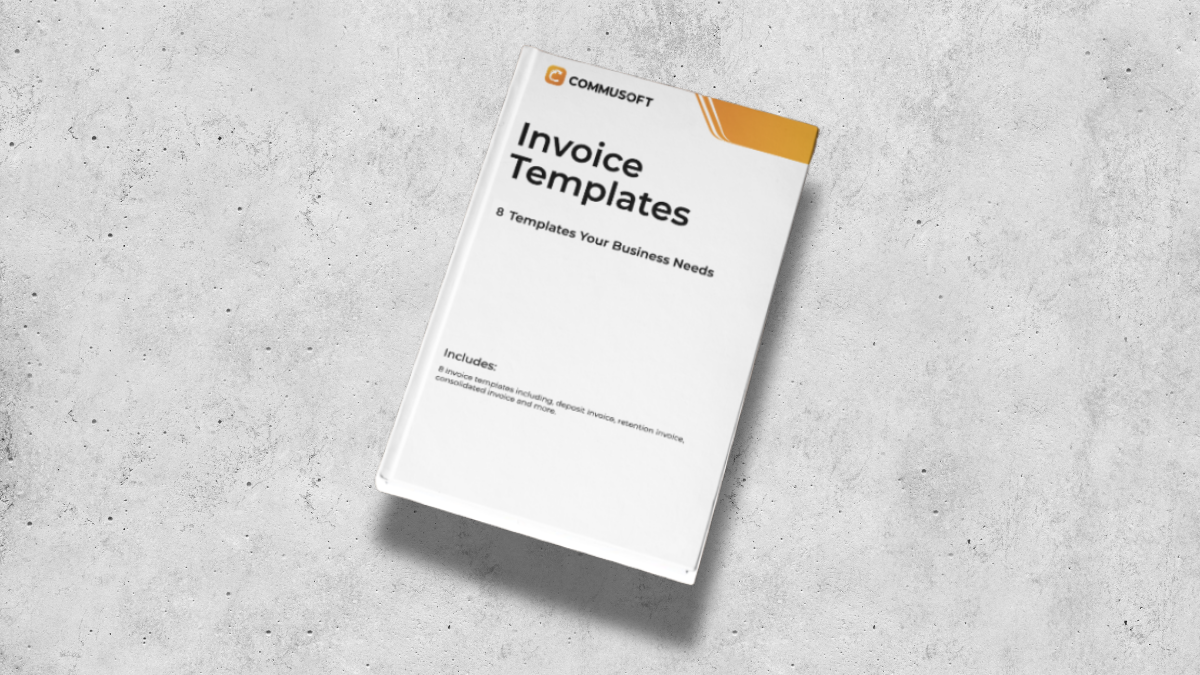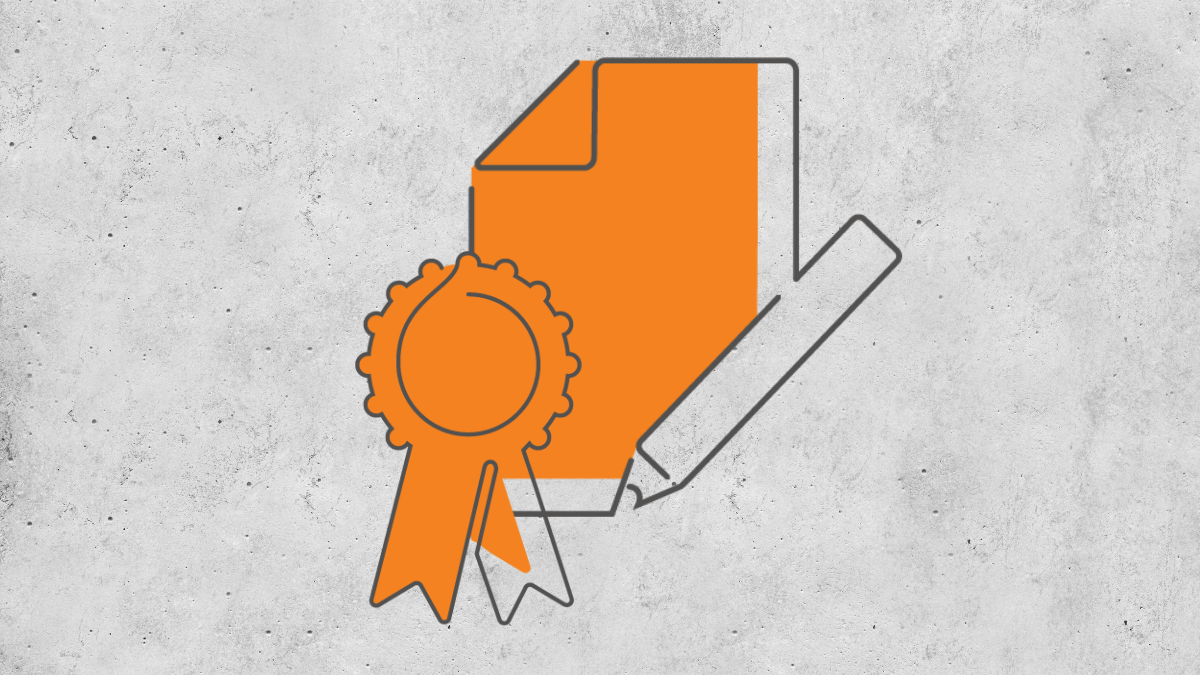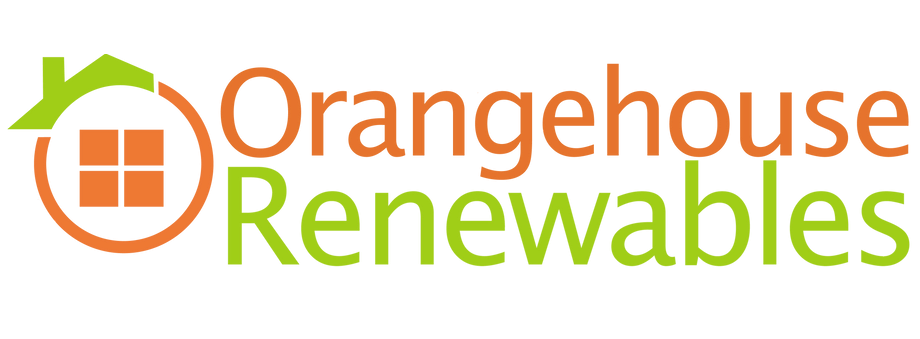Maintenance Contracts for the Trades
Efficiently Manage Complex Contracts at Scale
Transform your maintenance contract management with all-in-one software that gives you total control.
Create, customise, and manage every contract with confidence!
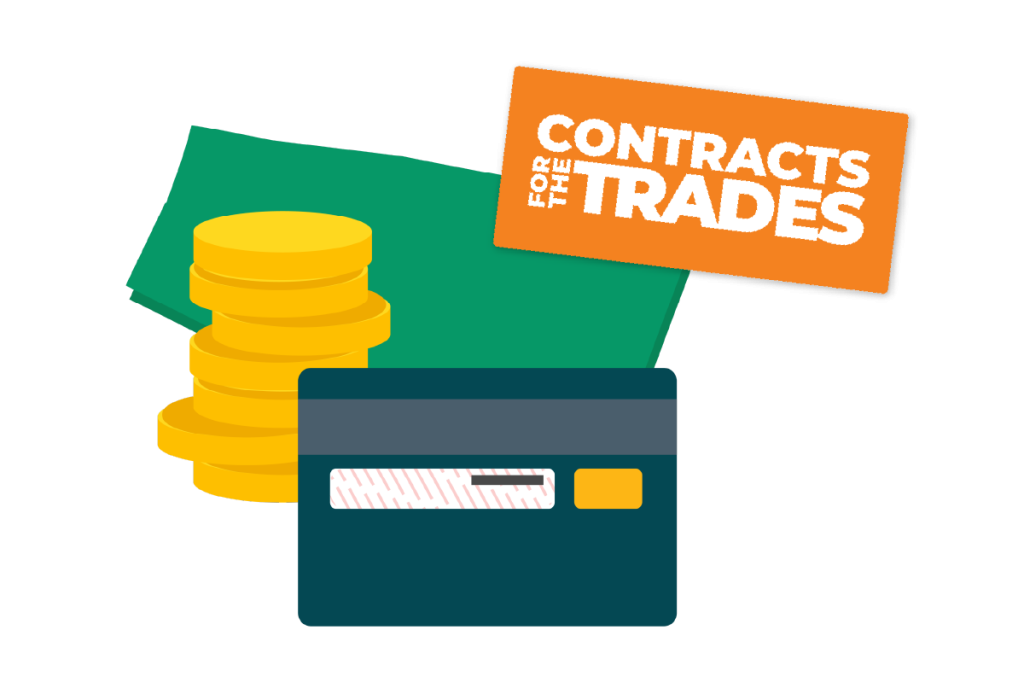
Elevating Your Maintenance Contracts
You’re no stranger to winning contracts, but do you have all you need to manage them efficiently?
When it comes to managing large-scale maintenance contracts for your field service business, the key challenge lies in managing their variety and complexity.
Compare this to residential contract management—where it’s all about learning to manage the volume of work—commercial maintenance contracts carry more weight. This means that your business has greater responsibility, risk, and increased liability to handle.
With so much more at risk should your service business fail to deliver on the terms of your contracts, you need to be prepared.
After all, failure will mean suffering more than a bit of damage to your reputation, or losing a single customer: failing a large-scale contract can cripple your business. As such, it’s necessary to understand how you can better large-scale contracts, understand the risks, and so protect your business.
While there are challenges with any sort of contract management—including B2C home service agreements—if you’re currently managing large-scale B2B & B2B2C contracts, or are aiming to win them down the road, we’re here to help.
This guide will cover all you need to know about making your commercial contract management more efficient.
What’s in the guide?
This guide will demonstrate how automated tools can help you manage your maintenance contracts more efficiently.
Additionally, we’ll explore how software tools can help you to overcome common issues and make managing contracts at greater scale easier. Here, we’ll focus on essential tools to support your PPM efforts and share more about SLA monitoring, too.
To top it off, this guide will showcase Commusoft’s very own Service Contracts tools. These tools have been specially designed to help field service businesses. They’ll enable your business to carry out more efficient contract management and ensure every need is met!
Note: You can navigate through this guide by using the menu on the left of your screen.
Let’s explore and learn how to manage your maintenance contracts with confidence.
Improving Your Maintenance Contract Management
It’s very likely that you’re already managing a wide variety of contract-types.
You’re also involved in carrying out planned preventive maintenance (PPM), and committing to service level agreements (SLAs). You might even be using contract management tools to support your work, too.
However, if you’re reading this guide, it’s increasingly likely that your current tools simply aren’t supporting you…
As the responsibilities you take on increase, you’ll have noticed that there are significantly more moving parts and complexities for your team to manage. If that’s the case, then you know your business could be at risk and you’re seeking ways to improve your contract management.
It’s important, then, to explore more proficient solutions and tools that can help ease the pressure and cope with the challenges facing your company.
However, the challenge of managing these large-scale maintenance contracts isn’t just in overseeing their many and varied moving parts. It’s also about keeping your team in control and managing them with confidence.
With greater oversight of contracts, you’ll ensure that your business is:
- Managing every contract more efficiently, without crossing wires between different systems.
- Managing at scale whether it's hundreds or thousands of tenant properties for a single client.
- Preventing problems with day-to-day jobs and handling maintenance, PPM, or emergency repairs.
- Giving customers confidence in your services by meeting the expectations of your service contract.
Altogether this means you’ll be able to more effectively fulfil your contractual obligations, keep customers happy, and make managing complex contracts much easier.
As we’ll explain, this is simpler when using fully automation tools that streamline contract management tasks.
Understanding Risk and Managing Liability
With great revenue opportunities, comes great responsibility.
As mentioned, perhaps the biggest point to concern yourself with for managing large-scale maintenance contracts is risk.
Before we continue the guide, it’s important to understand more about what it means to take on this type of contract and better understand the risks.
What is risk management?
A business should only take on a contract (of any size) when they fully understand the risks involved.
After all, by taking on a contract, your business is accepting liability and is obligated to fulfil the services that are described in the contract.
The bigger the contract, the greater the risk.
Risk management, then, refers to how a business evaluates and understands the requirements and consequences that are involved if contractual obligations not be met.
By evaluating the risks (which can include financial, safety, legal, and more), a business can establish procedures that help them avoid, limit, or reduce the impact of these risks and their consequences.
For example, if a business is taking on the HVAC maintenance of an office building, the following are just a few of the risks they need to account for:
- Safety hazards
- Financial and operational costs
- Maintenance tasks
- Impact to occupants
- Building regulations
- Cost of not meeting SLAs and consequences of contractual failure
Details of these risks will be included in the contract. But it’s awareness of these responsibilities and the consequences involved—which range from fines to complete loss of a contract—that indicate if a business should take on the contract.
As mentioned, this should only be done if they’re sure they can fulfil the requirements and account for the liability that comes with it, too.
Different Types of Contract & Risk
We briefly touched on the types of contracts your service business may already be managing. Once again, these are:
- B2C – Residential / Service Contract Agreement
- B2B – Commercial Contract
- B2B2C – Commercial Estate/Property Management

We’ll briefly touch on all three types of contract, but for the rest of this guide we’ll focus on B2B and B2B2C contracts.
If you’d like to know more about B2C contract management, explore our Complete Guide to Home Service Plans:
B2C Contracts:
Business to Customer (B2C). A good example of a B2C contract is a care plan covering a homeowner’s heating system, like their boiler and radiators. A plumbing business may take on a contract, agreeing to maintain and repair these assets.
They’re lower revenue contacts, with low risk.
As such, if your trades business fails to repair and maintain the boiler, there’s very little risk to your business on the whole. Customers may be disappointed, but your business is unlikely to run into significant pressures and solutions (like replacing a boiler) will be much easier to implement, too.
B2B Contracts
Business to Business (B2B). As mentioned, a B2B contract carries more responsibility and risk, with increased financial reward.
Consider the following: you have a contract to maintain the HVAC system of a factory. Should their air-conditioning system fail, the building will become too hot for their employees to work in, and your client will have to cease production of goods and send their staff home.
The risk to your trades business if it fails to fix or maintain these assets may cost your client an entire day’s production (or worse) and cost them tens of thousands.
Within the B2B contract, it may stipulate that there are fines for failing to meet certain requirements. This may also apply to missing an SLA (more on that later). It may mean that the factory sues your business for breach of contract.
In this worst-case scenario, not only are you likely to lose a lucrative contract, but it would lead to a significant loss of revenue. As noted, the risk to your business is high, but there’s higher revenue.
B2B2C Contracts
Business to Business to Customer (B2B2C). Similar to above is B2B2C, which can overlap with residential B2C contracts. This includes working with estate agents and property management their many, many tenants.
The risk here, just as with B2B maintenance contracts, is high, but so are the revenue prospects. There’s more complexity, especially in cases where you may cover thousands of properties and tenants across multiple areas.
These contracts may contain additional legal protections and even greater risks to manage. Breaching the terms of these contracts can be very damaging and the risk, again, is very high to your business.
What's Included in a Commercial Contract?
What should you include in a commercial maintenance contract?
Let’s break down and define what’s included in a commercial maintenance contract.
We’ll also include a short summary about what each point means within the contract:
Job description and scope of the work
The job description will detail the types of service covered in the contract. You may also include exclusions in the contract, to ensure it’s clear what your business is and isn’t responsible for, as certain maintenance could fall to another party. The job description itself will have details about preventive maintenance, emergency repairs, reactive maintenance, call-out frequency, and stipulate details about asset monitoring.
Property type & information
This will define the property/properties being serviced, as well as specific locations. Addresses will be listed to ensure that all parties are aware of exactly where the jobs will take place and where you’re responsible for monitoring. This section may also highlight permits, how to access the property, and safety protocols to follow as well.
Keep in mind it’s useful to define the number of properties under contract, the size of the customer base.
Points of Contact / Communication
Contracts should define key points of communication. This may define who a lead contact is, how best to communicate, what steps to follow, etc..
Assets
Similar to the property, a complete list of the assets you’re contractually obligated to care for will be listed here. This will make clear what your business is responsible for, as per the terms of the contract. These can be tracked with asset maintenance software.
It may also include details about warranties of said assets and, similarly and guarantees on the workmanship carried out.
Labour and materials

The terms and conditions of the cost of materials and staff labour may be listed here. This is useful, for instance, in defining whether the cost of materials is included in the cover, or expensed at an additional cost. The details of this will be made clear in the contract so there’s no confusion.
Billable rates & rules
Define the costs associated with the contract. This will usually cover maintenance fees and the overall cost of the contract. Rules may also be included to highlight additional costs i.e. how much you should charge for additional service work. A particular challenge of commercial contracts will be in managing different billable rates and terms across a variety of contracts: there’s no one-size-fits-all fee.
Contract length/type
This will specify how long the contract will run for. It may also define a break clause in the contract, giving both your business and/or the customer room to terminate the contract, under certain circumstances. Equally, it may also include information about renewing the contract as well and the steps required.
Invoicing Schedule i.e. Yearly/Monthly
Alongside the payment details, this will also define how often a client is billed for your services. Smaller businesses or residential customers may prefer monthly invoices, but larger businesses may pay a yearly fee, covering all costs at once. With the right invoicing software, you can compile monthly individual invoices into one lump sum, easily.
Payment/invoicing mechanism
This will cover how the method for how a service is paid. Are you charging upfront, quarterly, or yearly? This should be defined in the contract so it’s clear to your payments team and the customer. You may also define the means by which a payment is delivered/received. You could set up a recurring payments via direct debit, too.
Renewal of contract
As well as invoicing and payments, the contract should also define the terms of renewal. Contracts can run annually, every two years, or more. Depending on the type of service you provide, it may be wise to keep flexible.
Signing long-term contracts would only be advantageous if you have a strong partnership and confidence in maintaining this in the long-term (something made easier by a well thought out risk assessment).
Service level agreements
The SLAs listed in the contract will define targets you’re required to achieve. From time sensitive responses to emergencies, repair completion times, guarantees, as well as communication between the service provider and customer. These are just a few examples of SLAs that could exist in your contract.
PPM and Task Building
This will explain the steps followed at the job. For example, if you were a plumbing contractor, it would mention checking details such as water pressure, pipe health, flushing of drains, and safety valves. You’d expect to see a complete breakdown of all the agreed upon checks required.
PPM Schedule
This will detail the frequency of the visits to the site. It may also include details relating to additional call-out requests and checks. As mentioned in Billing Rates/Rules, such checks may come at an added cost. Managing the schedules of these check-ups can be a big challenge, particularly when maintenance can take days to carry out.
There will also be time-sensitive requirements to ensure that assets are maintained and legally compliant.
Reporting
For large-scale contract, you’ll need to feedback and communicate on the maintenance you carry out, as well as share other details of your service. This portion of the contract will make that clear.
While these same information points will appear in most every contract, the exact details will always differ from contract to contract.
This is part of what makes commercial maintenance contracts so much more complicated to manage without the right tools. The number of assets drastically increases, SLAs become varied and bespoke from client to client (as do the consequences for missing them) and so risk overall becomes greater, too.
In this case, for commercial contracts, there’s no one-size-fits-all contract that’s easy to understand. Instead, you need a single, powerful tool that makes managing a wide variety of contracts easy.
Let’s explore more about what it means to manage maintenance contracts more efficiently:
Improving Contract Management Efficiency
Let’s see how to improve your commercial contract management.
Much of this relies on being organised from an administrative perspective. After all, this is where the majority of the contract management burden lies.
However, when managed well, it’s here that you can mitigate the risk of something going wrong on a job, payments, or communications.

With a series of well-organised processes in place, arranging and delivering on the service you provide will be comparatively easier. This will relieve stress for staff and ensure they aren’t getting lost in the details of each and every contract.
Instead, they can organise them with confidence and your team can execute the service contract without issue.
Let’s take a look at how your team can manage maintenance contracts more effectively.
Exploring Automation and Contract Management:
Working smarter, not harder is the goal when managing commercial maintenance contracts. And these days, there’s a lot that software can do in order to maximise efficiency within your service business.
Keep in mind that a lot of these resources apply to your business at scale, not just for contract management!
An all in one management system can be a huge game changer for your service business, and it’s full automation that you’ll be seeking. This means controlling everything from job management, invoicing, to reporting, and more.
Relying on Automation
One of the best ways to manage large scale contracts is to rely on automation software that saves time everywhere: not just on niche tasks.
With automated tools helping you take care of the admin tasks mentioned above, you can rely on your management system to pull data instantly, so it’s ready for your team. This way, no matter their situation, they have all the information they need, when they need it.
Accessibility is paramount to productivity, so a single customer view makes the management experience even better.
Let’s explore a few specific automation tools in more details, as these will be especially helpful when it comes to contract management:
Payment Integration:
Easily charge landlords for monthly recurring payments, establish rules for additional charges, payment terms, and costs for repairs and emergency work, or even discounts.
When payment data, such as labour and parts rates are included in your system, you can rely on the relevant data being pulled into contracts automatically. This saves time finding and entering data, streamlining data entry for your admin staff
PPM Scheduling:
This allows maintenance plans to be scheduled in detail with jobs automatically raised weekly, monthly, or quarterly, so there is no doubt as to what needs to happen and when.
PPM includes tasks for each and every job description in the contract as well. This way you can automatically create jobs and assignments for your engineers and always take the correct action as defined by the terms of the contract.
With an SFG20 integration, for example, you can incorporate existing maintenance schedules into your PPM to save time for common assets. Trades businesses who use SFG20 to create and manage building maintenance schedules can upload PPM lists into their Commusoft account. With dedicated software, you can integrate your SFG20 Data and reduce errors to ensure industry compliance.
SLA Monitoring:
Easily track a wide variety of metrics and priorities, ranking them from urgent, important, medium, to less important tasks). With automation lending a hand your team can easily track SLAs and promptly respond to breaches.
Swift reactions will improve your SLA attainment rate and boost company revenue.
Using software, staff will see when an SLA starts as soon as a job is created. They’ll also be alerted automatically if an SLA will soon breach and enjoy greater transparency and accountability.
Get a 360 degree timeline view:
This single customer view approach will present staff with all job history, details, assets, of every single customer. This way, teams can use software to respond rapidly and in real-time. Such a display will improve all aspects of customer service and service delivery for payments, scheduling, customer communication, and more.
Contract management needn’t be complicated. It’s why it’s important to use a tool that is well structured and easy to use.
Something that’s all-in-one.
We’ll explain more about how Commusoft fits this description below. For now, know that it’s important for you to use a tool that makes use of contract templates, let you customise your contracts, and also which helps you get the details you need, when you need them.
This way, your team can always understand the details, cope with contracts at scale, and not worry about the administrative burden that comes with it.
Benefits of Efficient Contract Management
What benefits does all this improved organisation get your field service business? In short:
- Increased scalability and volume of work
- Streamlined communication and record-keeping
- Enhanced scheduling and dispatching
- Automated reminders and reports
- Improved data analysis and decision-making
- Revenue Security (for bigger contracts)
- Connected functionality (thanks to an all-in-one, out of the box solution).
Let’s explore each of these in a bit more detail, thinking about the core challenge and then benefits of using software to improve efficiency:
Increased Scalability and Volume of Work:
Challenge: Juggling multiple contracts and clients within that contract, all with varying terms and requirements can lead to confusion, missed deadlines, and potentially costly mistakes.
Benefit: Streamline workflows and manage a higher volume of contracts by centralising information and automating tasks, thanks to software system holding all the data in one place, wherever your team is working.
Streamlined Communication and Record-Keeping:
Challenge: You’re well beyond using paper to keep track of records and already used to sending digital reminders, but without automation, there can still be delays and mistakes that crop up all too easily.
Benefit: Streamline communication with your clients and make it easy for them to access their data via a customer portal. For you staff, using software makes it easy for them to access, update, and implement data, so they can easily send communications, full of the right data, in moments.
Enhanced Scheduling and Dispatching:
Challenge: Keeping track of schedules with an ineffective system can lead to inefficient resource allocation and missed services. Delays can be costly and hurt the productivity of your team.
Benefit: By using software the creating jobs to fit specific timeframes, you can optimise schedule for every engineer, based on their availability, location, and even their skill sets. With an automated system, you’re far more likely to get your staff to an appointment on time and meet your contracted requirements.
Automated Reminders and Reports:
Challenge: Reliance on manual reminders to try and keep your team aware of preventive maintenance or upcoming contract renewals can lead to missed deadlines and revenue loss. They’re unreliable.
Benefit: Automated service reminders can be set up to prompt your team and customers at different intervals.
This way, it’s no longer on one person to keep up to date, but everyone is involved and on the same page regarding upcoming service needs and contract renewals. This is great for saving time, keeping customers happy, and securing recurring revenue.
Use our FREE Recurring Revenue Calculator!
Improved Data Analysis and Decision-Making:
Challenge: Without data that’s easily accessible, it’s a challenge to track your responsibilities, especially if you’re juggling SLAs and reacting to emergency appointments. It’s also difficult to know how well you’re fulfilling (or failing) the terms of your contract.
Benefit: Using software will provide insightful data for you to analyse and report on. You can identify trends and better understand areas for improvement, too. It’s only through well organised data that you can hope to optimise your service delivery, and make decisions that improve your service and customer experience of that service.
Revenue Security (for Bigger Contracts):
Challenge: Complex contracts that have a wide variety of requirements, SLAs, contacts, and billing structures can be a nightmare to maintain, or require excessive manpower which can be costly, slow, and more prone to errors.
Benefit: Create flexible billing that’s easy to calculate and automate through your system. Take the guess-work out by billing on agreed-upon rates, benefit from lightning fast calculations, all of which can be monitored and maintained through your job management system and safeguard your revenue.
Connected Functionality (All-in-one, Out-of-the-Box Solution):
Challenge: It’s always going to be much more difficult to do a job well if you’re using a variety of software solutions for different aspects of contract management i.e. job assignment, finance, parts, communication. This is time consuming to maintain and inefficient.
Benefit: An all-in-one solution simplifies operations and brings everything together under one roof. This way, all data is aligned, easily accessible, and makes every customer and colleague interaction simpler and more efficient.
Understanding Planned Preventive Maintenance
It is critical to nail a planned maintenance schedule when it comes to commercial contracts
For example: carrying out the quarterly and yearly checks of an office block’s fire safety equipment. This would include checking that all alarms are in working order, that fire extinguishers and suppression systems are functioning and in-date, too. Routine maintenance will guarantee the building’s safety and cover your business for liability.
Planned maintenance is preferred by most customers, since this strategy saves them both time and money in the long run. Customers benefit from extended asset life and workplace safety, while using software to manage PPM will allow your business to secure regular job bookings with service reminders, provide unparalleled service, and make bigger profits.
Use PPM to build productive workflows so you can operate smoothly, every day. Impress your customers thanks to a single customer view that helps you access information and respond immediately. Altogether, boost revenue thanks to tools that make it easy to get paid, order parts only when you need them, and secure jobs with ease.
Rio Pools have used the contracts functionality in Commusoft to schedule in our regular maintenance visits for both our commercial and domestic customers.
This has really helped us ensure all required maintenance visits on our customers swimming pools, spas, and the associated equipment are carried out and that nothing gets missed.
The contracts function allows us to plan the various different visits required in a certain time frame, our customers contract periods tend to be 6 months to 1 year.
— Ian Mills Service Team Lead, Rio Pools Construction Ltd
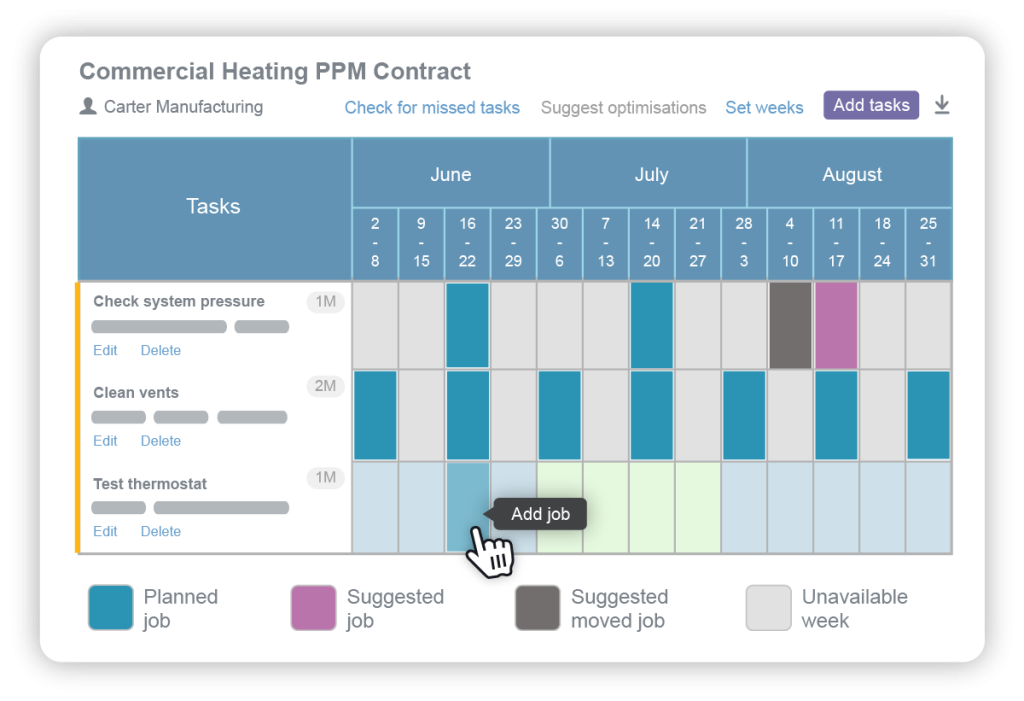
Implementing Service Level Agreements
It’s important to spend just a bit of time thinking about the importance of SLAs
Service Level Agreements (SLAs)
Service Level Agreements (SLAs) define the expectations of the service you provide to your customers. They signify your promise to meet set standards. Failure to meet an SLA can have consequences, such as a fine or termination of the contract.For example: For most field service companies, SLAs are often time-sensitive. “An engineer will arrive within 30 minutes of an emergency appointment being requested”, or “A maintenance job, once started, will be completed within 2 hours”.
The service-level agreements your team sets can be better managed with the right software. With service level agreement software, like Commusoft, you can follow colourised SLA countdown timers which automatically track SLAs.
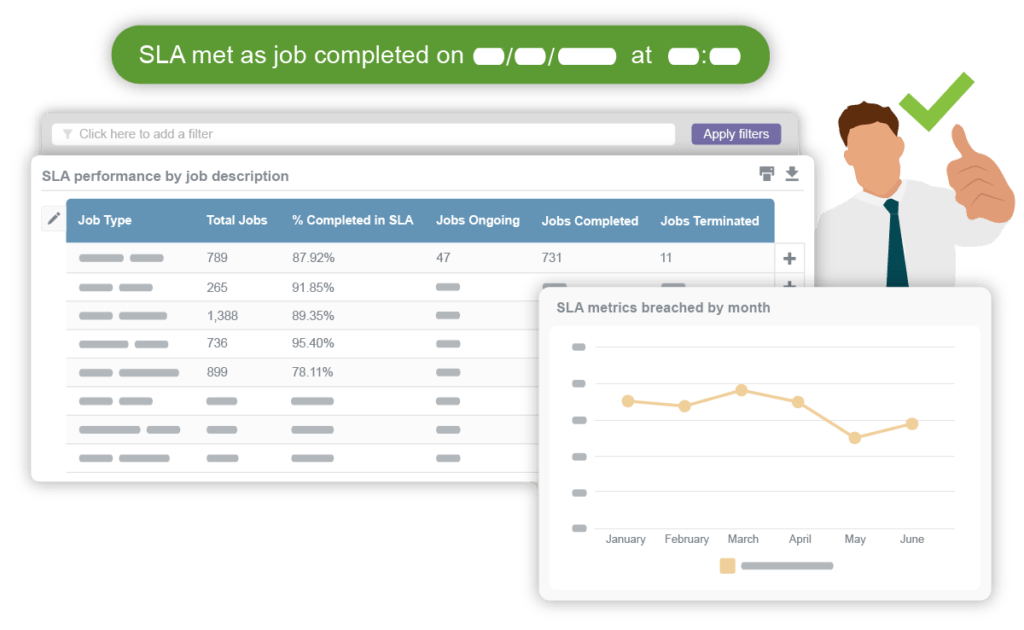
This system ensures everyone involved with the job is aware of contact terms and when they’re due to breach.
Further, an organised system can help your team determine where you excel, highlight opportunities to improve, and consider updating terms in the future.
Additionally, a service-level agreement workflow will help your team build a workflow for how to respond when contracted agreements are breached. This level of monitoring enables managers to contact customers straightaway, explain why the agreement was breached, and offer discounts if necessary.
While a breached agreement brings consequences, monitoring software can vastly improve your team’s response times and overall customer service. With that, you can expect to avoid issues more easily and prove your commitment to your customers.
Phil Mulvenna details how Commusoft aids in this process:
SLAs are really important for our business; they help us track the service we offer. If the SLA isn’t met, I will get a notification, or my manager will get a notification, and we can look at why that happened, and be on top of the situation before it escalates.
— Phil Mulvenna Managing Director, Premier Heating Solutions
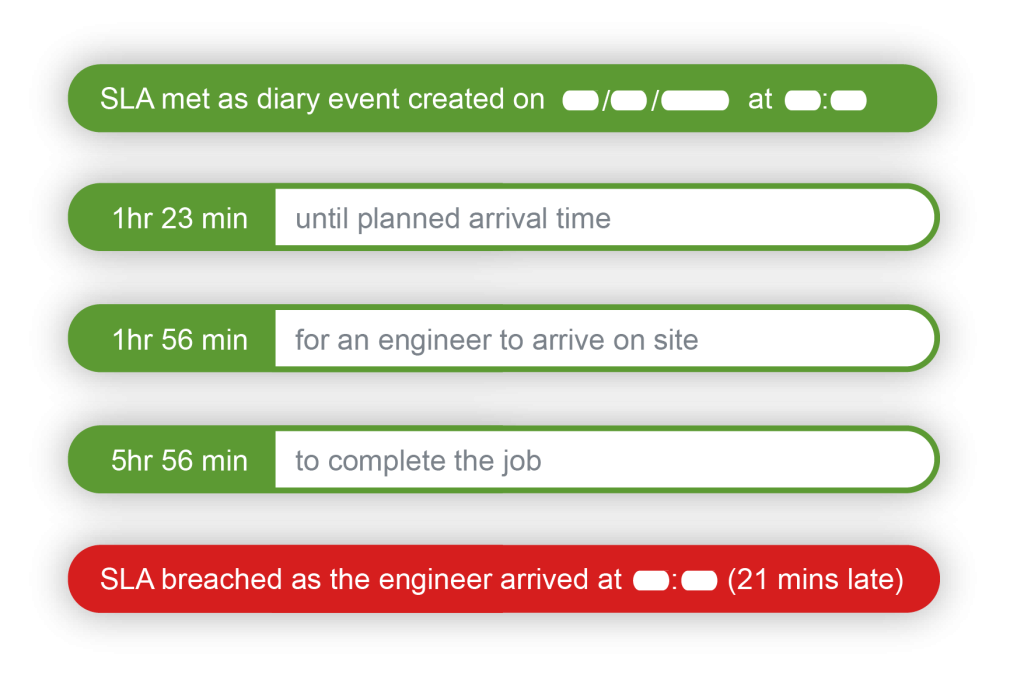
Commusoft: Ultimate Contract Management
We’ve simplified service contract management.
With Commusoft, you decide which metrics are measured by each contract. Of course, this means you can rest easy knowing you can manage them all, no matter what they are thanks to our tools.
For different contract terms, you can edit the contract details on a customer-by-customer basis. This way, everyone is happy.
We’ve simplified contract management so that your needs are always met, meaning you can always meet the needs of your customers in turn.
That includes helping you:
- Manage complex planned preventive maintenance schedules
- Ensuring you never miss an SLA thanks to warnings and notifications
- Make use of Customisable Contract templates ft. SLAs, PPM
- Handle contracts operations alongside job management tools
- Save time for common assets our SFG20 integration
- Incorporate existing maintenance schedules into your PPM
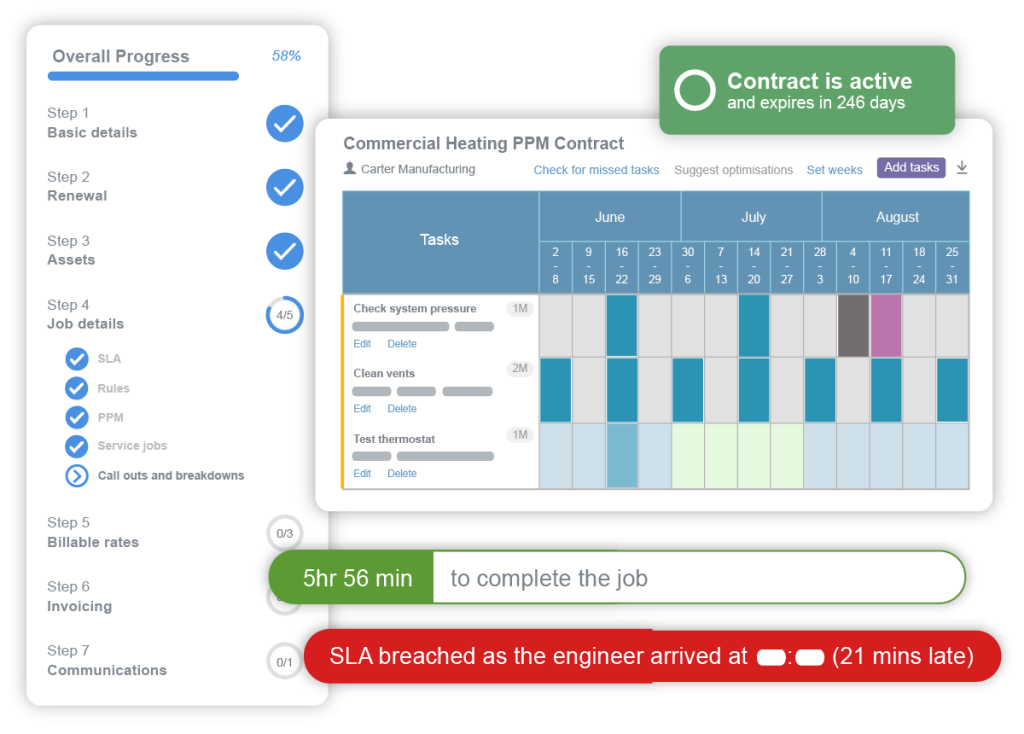
Learn more about Commusoft’s service contract management and how you can manage contracts to meet your needs.

